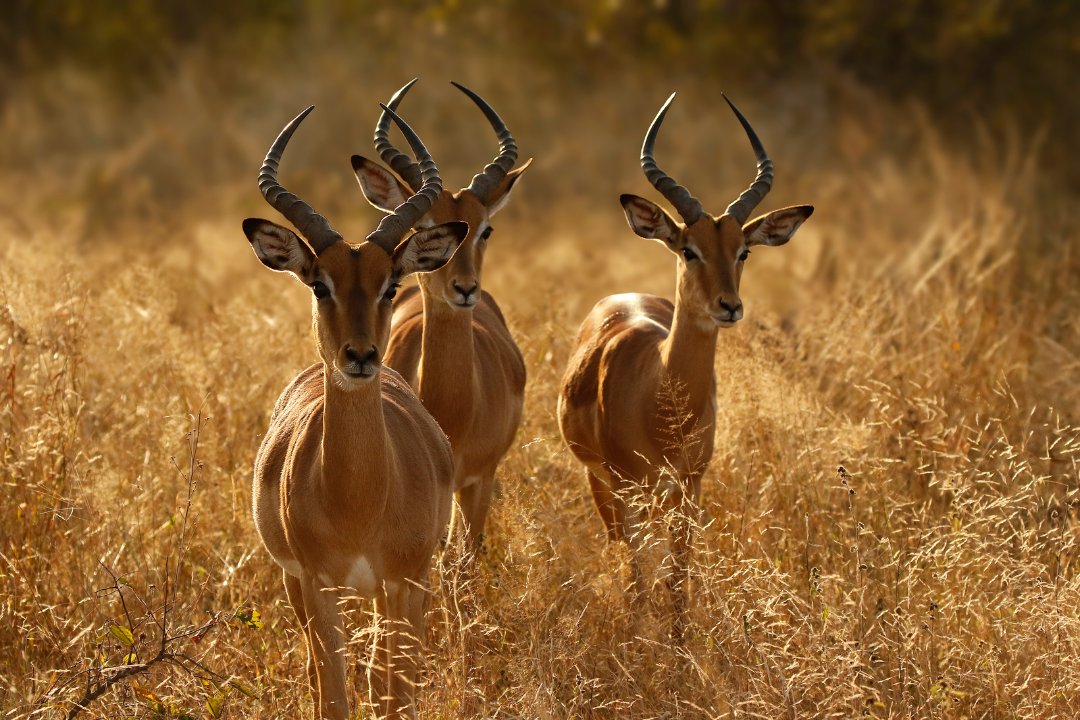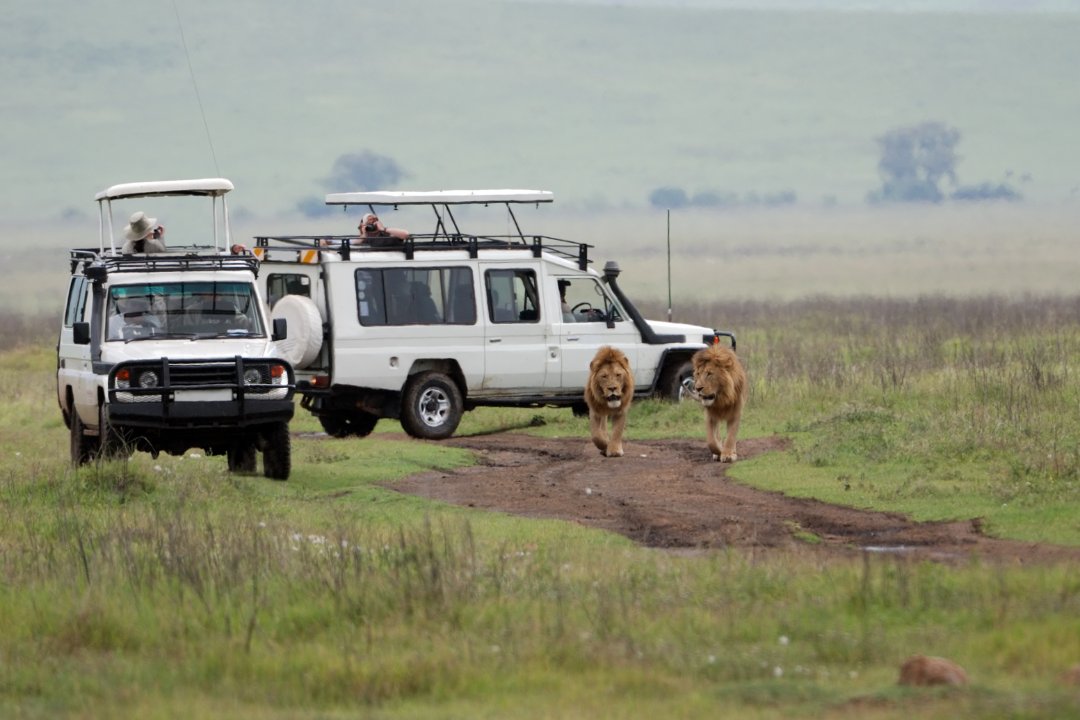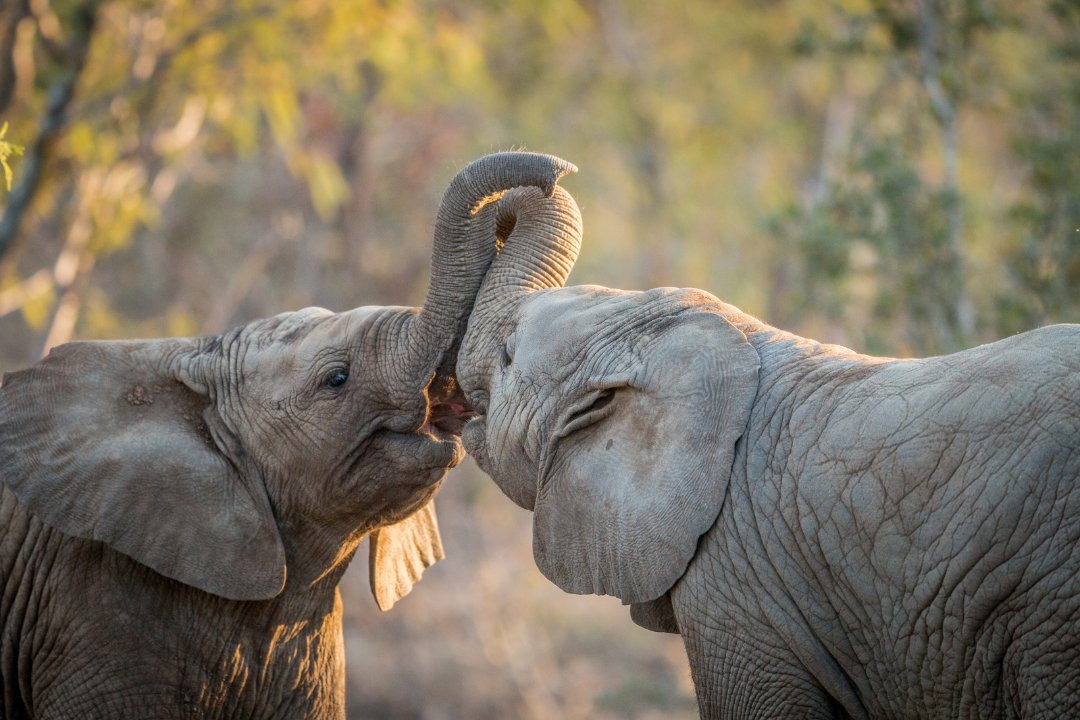Serengeti National Park, located in northern Tanzania, is one of the most renowned wildlife sanctuaries in the world. Spanning approximately 14,750 square kilometers, the park is famed for its stunning landscapes, diverse ecosystems, and rich biodiversity. The Serengeti’s vast plains, punctuated by acacia trees and rocky outcrops known as kopjes, provide a breathtaking backdrop for the incredible wildlife spectacles that occur within its borders. The park is perhaps best known for the Great Migration, a dramatic and awe-inspiring event where over a million wildebeest, accompanied by hundreds of thousands of zebras and gazelles, traverse the plains in search of fresh grazing. This annual journey is a prime example of the intricate balance of nature and the powerful forces driving the survival of species.
Beyond the migration, Serengeti National Park is home to an impressive array of wildlife, including the Big Five: lions, leopards, elephants, buffalo, and rhinos. The park’s diverse habitats, ranging from riverine forests and swamps to woodlands and open savannahs, support over 500 bird species and a multitude of other animals. Conservation efforts in the Serengeti have been pivotal in protecting endangered species and maintaining the ecological integrity of the region. The park’s significance extends beyond its natural beauty and wildlife; it holds cultural and historical importance for the local Maasai people and has been recognized as a UNESCO World Heritage Site. The Serengeti continues to captivate visitors from around the globe, offering an unparalleled glimpse into the heart of wild Africa



1. What is the best time to visit Serengeti National Park? The best time to visit the Serengeti depends on what you want to see. For the Great Migration, the best times are from late June to October when the herds are in the northern Serengeti and crossing the Mara River. From December to March, you can witness the calving season in the southern Serengeti. The park is accessible year-round, and each season offers unique wildlife viewing opportunities.
2. How can I get to Serengeti National Park? The Serengeti is accessible by both road and air. Most visitors fly into Kilimanjaro International Airport or Arusha Airport and then take a small charter flight to one of the airstrips in the park. Alternatively, you can drive from Arusha, which takes about 7-8 hours depending on the route and stops along the way.
3. What accommodation options are available in the Serengeti? The Serengeti offers a wide range of accommodations to suit different budgets and preferences, including luxury lodges, tented camps, and budget campsites. Some lodges and camps are mobile and move with the migration, while others are permanent fixtures within the park.
4. Is it safe to visit Serengeti National Park? Yes, it is generally safe to visit Serengeti National Park. However, like any travel to wildlife areas, it’s important to follow the guidance of experienced guides and adhere to park regulations. Ensure you have necessary vaccinations and take precautions against malaria.
5. What wildlife can I expect to see in the Serengeti? The Serengeti is home to a wide variety of wildlife, including the Big Five (lions, leopards, elephants, buffalo, and rhinos). You can also see cheetahs, hyenas, giraffes, zebras, wildebeest, gazelles, hippos, and over 500 species of birds. The Great Migration is a major highlight, featuring millions of wildebeest and zebras.
6. Do I need a visa to visit Serengeti National Park? Yes, most visitors will need a visa to enter Tanzania. Visas can be obtained upon arrival at the airport or in advance from Tanzanian embassies and consulates. It’s advisable to check the latest visa requirements before you travel.
7. What should I pack for a trip to the Serengeti? Pack light, breathable clothing in neutral colors, a wide-brimmed hat, sunglasses, sunscreen, and insect repellent. Binoculars and a good camera are essential for wildlife viewing. Sturdy walking shoes and a warm jacket for early morning and evening game drives are also recommended.
8. Are there any cultural experiences available in the Serengeti? Yes, visitors can experience the rich culture of the Maasai people who live near the park. Many tours offer visits to Maasai villages where you can learn about their traditions, see traditional dances, and purchase handmade crafts.
9. What activities are available in Serengeti National Park? Activities in the Serengeti include game drives, hot air balloon safaris, guided walking safaris, and bird watching. Some lodges also offer night game drives and cultural visits to nearby Maasai villages.
10. How does Serengeti National Park contribute to conservation? The Serengeti plays a crucial role in conservation efforts by protecting a diverse array of species and habitats. The park is involved in various initiatives to combat poaching, preserve endangered species, and promote sustainable tourism practices. Conservation fees paid by visitors support these efforts and help maintain the park’s ecological balance
For questions or booking inquiries, call +255 672 827 822 or
contact us.
What people say about Tarangire National Park in Tripadvisor
 Bean G2024-07-20Memorable Safari Experience with Wild Rhythm Adventure Our 5-day safari with Wild Rhythm Adventure, led by Ian, was simply incredible. Ian's expertise and passion for wildlife made every moment unforgettable. From thrilling game drives to stunning sunsets, it was a journey of a lifetime.I highly recommend Wild Rhythm Adventure to anyone seeking an authentic safari experience. Their professionalism, dedication, and passion for wildlife conservation make them a standout choice for exploring the wonders of Africa. Thank you, Ian and the team, for an unforgettable journey!
Bean G2024-07-20Memorable Safari Experience with Wild Rhythm Adventure Our 5-day safari with Wild Rhythm Adventure, led by Ian, was simply incredible. Ian's expertise and passion for wildlife made every moment unforgettable. From thrilling game drives to stunning sunsets, it was a journey of a lifetime.I highly recommend Wild Rhythm Adventure to anyone seeking an authentic safari experience. Their professionalism, dedication, and passion for wildlife conservation make them a standout choice for exploring the wonders of Africa. Thank you, Ian and the team, for an unforgettable journey! softwareman p2024-07-10Marangu route with Wild Rhytm I recently completed the Marangu route on Mount Kilimanjaro with Wild Rhythm Adventures. The experience was exceptional, thanks to the expertise and dedication of our guide, Johnson. The organization and support provided by Wild Rhythm Adventures ensured a safe and memorable trek. Johnson's knowledge of the terrain, coupled with his encouraging demeanor, made the challenging journey enjoyable. I highly recommend Wild Rhythm Adventures for anyone looking to conquer Kilimanjaro.
softwareman p2024-07-10Marangu route with Wild Rhytm I recently completed the Marangu route on Mount Kilimanjaro with Wild Rhythm Adventures. The experience was exceptional, thanks to the expertise and dedication of our guide, Johnson. The organization and support provided by Wild Rhythm Adventures ensured a safe and memorable trek. Johnson's knowledge of the terrain, coupled with his encouraging demeanor, made the challenging journey enjoyable. I highly recommend Wild Rhythm Adventures for anyone looking to conquer Kilimanjaro. Геннадия Р2024-07-09Truly Unforgettable Adventure Wild Rhythm Adventures provided an exceptional 2-day safari experience that exceeded all expectations. From the moment we departed, every detail was meticulously arranged, ensuring seamless transitions between parks and maximizing our time with wildlife. Lake Manyara National Park showcased its famed tree-climbing lions and diverse birdlife, while Tarangire National Park offered unforgettable encounters with elephants and stunning baobab trees. The knowledgeable guides made each game drive informative and exciting, enhancing our understanding of the ecosystem. Accommodations were comfortable, meals delicious, and the overall service impeccable. A truly unforgettable adventure, highly recommended for anyone seeking a glimpse into Tanzania's natural wonders.
Геннадия Р2024-07-09Truly Unforgettable Adventure Wild Rhythm Adventures provided an exceptional 2-day safari experience that exceeded all expectations. From the moment we departed, every detail was meticulously arranged, ensuring seamless transitions between parks and maximizing our time with wildlife. Lake Manyara National Park showcased its famed tree-climbing lions and diverse birdlife, while Tarangire National Park offered unforgettable encounters with elephants and stunning baobab trees. The knowledgeable guides made each game drive informative and exciting, enhancing our understanding of the ecosystem. Accommodations were comfortable, meals delicious, and the overall service impeccable. A truly unforgettable adventure, highly recommended for anyone seeking a glimpse into Tanzania's natural wonders. naomie m2024-06-07Amazing A serious agency, i highly recommend. During these 3 days in Tanzania, Hammad listened to our needs and expectations, we were able to discover wonderful places. Thank you again for the professionalism of the agency!
naomie m2024-06-07Amazing A serious agency, i highly recommend. During these 3 days in Tanzania, Hammad listened to our needs and expectations, we were able to discover wonderful places. Thank you again for the professionalism of the agency! Abeid J2024-05-31incroyable experience We traveled with Wild Rhythm Adventures, and it was wonderful! Our guide, Hussein, was excellent—highly knowledgeable about Tanzania, adept at locating wildlife, efficient on the roads, and fluent in French. Our accommodations were amazing, and the itinerary was perfect. We highly recommend Wild Rhythm Adventures!
Abeid J2024-05-31incroyable experience We traveled with Wild Rhythm Adventures, and it was wonderful! Our guide, Hussein, was excellent—highly knowledgeable about Tanzania, adept at locating wildlife, efficient on the roads, and fluent in French. Our accommodations were amazing, and the itinerary was perfect. We highly recommend Wild Rhythm Adventures! jesca m2024-05-31*Exceptional Safari Experience with Wild Rhythm Adventures* Last year, I had the pleasure of experiencing a two-day safari in Tanzania with Wild Rhythm Adventures, exploring the incredible Tarangire and Ngorongoro. It was an unforgettable adventure. The safari was meticulously organized, and every detail was taken care of, ensuring a seamless and enjoyable experience. Our guide Hasheem, was knowledgeable, friendly, and passionate about the wildlife and the environment. They took us to some of the most stunning spots, where we witnessed an incredible array of animals and breathtaking landscapes. Wild Rhythm Adventures provided excellent service from start to finish. The accommodations were comfortable and well-chosen, adding to the overall enjoyment of the trip. I highly recommend Wild Rhythm Adventures for anyone looking to explore the beauty of Tanzania through a well-curated safari experience. Their professionalism and dedication to creating memorable adventures truly set them apart. Thank you, Wild Rhythm Adventures, for an amazing journey!
jesca m2024-05-31*Exceptional Safari Experience with Wild Rhythm Adventures* Last year, I had the pleasure of experiencing a two-day safari in Tanzania with Wild Rhythm Adventures, exploring the incredible Tarangire and Ngorongoro. It was an unforgettable adventure. The safari was meticulously organized, and every detail was taken care of, ensuring a seamless and enjoyable experience. Our guide Hasheem, was knowledgeable, friendly, and passionate about the wildlife and the environment. They took us to some of the most stunning spots, where we witnessed an incredible array of animals and breathtaking landscapes. Wild Rhythm Adventures provided excellent service from start to finish. The accommodations were comfortable and well-chosen, adding to the overall enjoyment of the trip. I highly recommend Wild Rhythm Adventures for anyone looking to explore the beauty of Tanzania through a well-curated safari experience. Their professionalism and dedication to creating memorable adventures truly set them apart. Thank you, Wild Rhythm Adventures, for an amazing journey! Albright N2024-05-30Unforgettable Safari Experience with Wild Rhythm Adventures My name is Jimmy, and last year I had the privilege of embarking on a 5-day safari in Tanzania with Wild Rhythm Adventures. Our journey took us through the breathtaking landscapes of Tarangire, Ngorongoro, and the Serengeti, and it was truly a journey of a lifetime. Our guide, Ian, was exceptional. He was not only extremely knowledgeable about the wildlife and environment but also a genuinely nice and personable guy. Ian showed us an incredible array of animals and provided deep insights into the diverse ecosystems we explored. His enthusiasm and expertise made our experience all the more memorable and enjoyable. Wild Rhythm Adventures provided us with outstanding service. The entire team was highly professional, organized, and attentive to every detail. Their dedication to ensuring a seamless and unforgettable experience was evident throughout our trip. We felt safe, well-cared-for, and thoroughly enjoyed every moment. I highly recommend Wild Rhythm Adventures to anyone seeking an extraordinary safari experience in Tanzania. Their expertise, dedication, and warm hospitality set them apart. If you're planning a safari, look no further than Wild Rhythm Adventures! Thank you, Wild Rhythm, for an amazing adventureShowing our latest reviews
Albright N2024-05-30Unforgettable Safari Experience with Wild Rhythm Adventures My name is Jimmy, and last year I had the privilege of embarking on a 5-day safari in Tanzania with Wild Rhythm Adventures. Our journey took us through the breathtaking landscapes of Tarangire, Ngorongoro, and the Serengeti, and it was truly a journey of a lifetime. Our guide, Ian, was exceptional. He was not only extremely knowledgeable about the wildlife and environment but also a genuinely nice and personable guy. Ian showed us an incredible array of animals and provided deep insights into the diverse ecosystems we explored. His enthusiasm and expertise made our experience all the more memorable and enjoyable. Wild Rhythm Adventures provided us with outstanding service. The entire team was highly professional, organized, and attentive to every detail. Their dedication to ensuring a seamless and unforgettable experience was evident throughout our trip. We felt safe, well-cared-for, and thoroughly enjoyed every moment. I highly recommend Wild Rhythm Adventures to anyone seeking an extraordinary safari experience in Tanzania. Their expertise, dedication, and warm hospitality set them apart. If you're planning a safari, look no further than Wild Rhythm Adventures! Thank you, Wild Rhythm, for an amazing adventureShowing our latest reviews